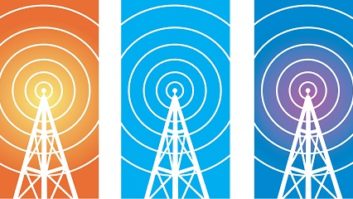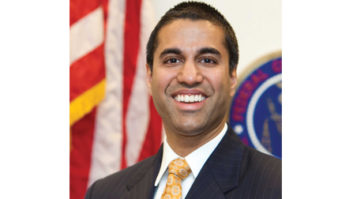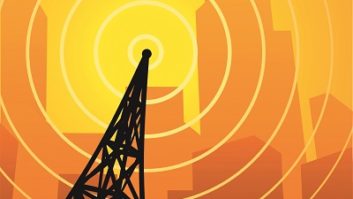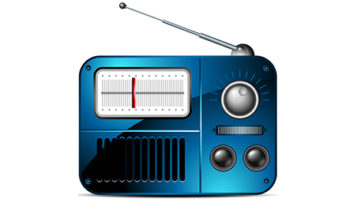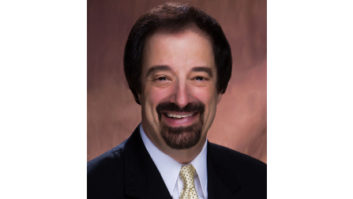This story has been updated to correct an editing error in the comments from Georgia-Carolina Radiocasting Companies regarding the number of AM stations that would be incentivized.
WASHINGTON — Ever since Commissioner Ajit Pai brought the plight of U.S. AM radio owners into the forefront a year and a half ago, broadcast engineers, owners, consultants and public interest groups have been prepared to give the FCC ideas about how to help.
Now they’ve done so. Responding to a Notice of Proposed Rulemaking, individuals and companies offered suggestions ranging from moving stations off the AM band entirely, to giving owners more flexibility in terms of signal coverage, antenna equipment and interference protections.
Many think the commission should split certain topics off into separate rulemakings, rather than tackle everything at once. Some offered services should the FCC need help sorting through it all. Many solutions involve complex engineering.
More than 160 initial comments were filed to MB Docket 13-249. To give the public more time to sort the ideas and develop thoughtful responses, the commission granted a request from the Association of Federal Communications Consulting Engineers to extend the deadline for reply comments. Those are now due March 20.
Below are excerpts illustrating some of the major themes. Topics are grouped by subject, so certain commenters appear more than once.
AN “AM-ONLY” TRANSLATOR WINDOW
National Association of Broadcasters:
The commission’s decision in 2009 to allow AM radio stations to use FM translators to rebroadcast their AM service has been a resounding success. To date, approximately 720 AM radio stations are using translators to overcome some technical and economic challenges. …
As the notice states, however, the universe of FM translators that are both eligible and available for use by AM radio stations is largely exhausted. To alleviate this problem, the commission proposes to open an FM translator filing window exclusively for AM stations. NAB agrees that such an approach will help expand the pool of cross-service translators.
PROCEED CAREFULLY ON TRANSLATORS
Common Frequency:
CFI wholeheartedly agrees with the FCC that eligibility for translator procurement must be “limited to AM broadcast licensees or permittees, and may apply for only one FM translator per AM station.” In fact, since such little room for FM translator licensing exist in major markets, we might even recommend that only one translator may be only licensed per licensee and not per AM station in the Top 50 Arbitron markets.
NOT A LONG-TERM FIX
Joint commenters consisting of Radio One, Multicultural Radio Broadcasting, Liberman Broadcasting and 25 other AM owners:
The most popular proposal by far is the FCC’s proposal to offer one FM translator for every AM station. But, of course, moving the AM programming over to the FM band does nothing to fix the problems with the AM band. In fact, it will tend to prolong the problems by discouraging AM station owners from spending money to repair or replace equipment as needed. … This proposal is nothing more than a partial step toward transitioning the AM service to the FM band. … The FCC’s proposal to open a window period for existing AM stations to apply for new FM translators may assist some additional AM stations, but there is limited spectrum available in most urban areas for FM translators, and the proliferation of FM translators will only serve to create more congestion in the FM band.
NO NEW AM STATIONS
du Treil, Lundin & Rackley:
We believe that the AM band has reached maturity and that with the numerous alternative program delivery options there are available today and the smaller total audience of AM listeners, it makes no sense to consider adding new AM stations. Existing AM stations should be encouraged to improve their service to their actual audiences with as much flexibility as possible in choosing their transmitter site locations and the details of their technical facilities — or get out of the way to let other stations make improvements subject to agreements submitted to the FCC for that purpose.
TAX CREDITS TO GIVE UP AM LICENSES
Georgia-Carolina Radiocasting Companies:
GACA believes there are many hundreds if not thousands of AM stations which would be incentivized to relinquish their AM licenses if the commission would have Congress enact tax credits for the surrender of AM station licenses. … We would suggest that these tax credits be commensurate with the population served by the licensee … with the minimum tax credit being $100,000 for the AM licensees in the least populated areas and to allow the transfer of these “credits” from surrendered AM licenses to profitable operators.
AM ONLY WORKS IN CARS ANYMORE
RF manufacturing engineer Dave Hershberger filed these comments as an individual:

Dave Hershberger told the FCC: “The main problem with AM radio is that it only works in cars anymore.” He installed a Pixel Technologies broadband loop antenna to pull in the signal from KNCO(AM), Grass Valley, Calif., six miles from his home.
The main problem with AM radio is that it only works in cars anymore. It is mostly unusable in residences. Speaking from my own experience, I am 6.4 miles from my local 5 kW AM station (KNCO, Grass Valley, Calif.). My daytime signal strength is predicted to be 47 mV/M. This is a good strong signal. Yet on common radios in my house the signal is unlistenable. … I bought a Pixel Technologies active broadband loop antenna, poured concrete for a mounting post, and trenched in coax in conduit. The Pixel loop antenna is 130 feet from my house. At last, I can receive AM radio in my house again. …
REDUCE DAY, ELIMINATE NIGHT COMMUNITY COVERAGE STANDARDS
NAB:
NAB also agrees with the commission’s proposals to relax the AM broadcasting daytime community coverage standards, and eliminate the nighttime standards. These rule changes will remove certain technical obstacles to relocating AM transmitter sites, and in some cases, save broadcasters the considerable expense of operating separate daytime and nighttime transmitter facilities. Permitting AM stations to conserve resources on these types of utility and infrastructure costs will increase broadcasters’ resources for services that more directly benefit the listening public.
… ELIMINATE BOTH
Hatfield & Dawson:
We believe that the “community coverage” requirements of the commission’s rules are entirely inappropriate in the context of the 21st century demographic circumstances of the United States, and should simply be eliminated. Even when these requirements were first adopted they were difficult to justify based on the totally disparate state government rules about city incorporation, expansion and annexation.
CHANGE CLASS A PROTECTION
du Treil, Lundin & Rackley:
We believe that the rules should be changed to make the protected contour for daytime co-channel overlap, daytime first-adjacent channel overlap, daytime critical hours protection and nighttime overlap from co-channel skywave signals the 0.5 mV/m groundwave contour for Class A stations. In the daytime, this will replace the presently protected 0.1 mV/m contour — which we believe should not be considered a coverage contour under today’s noise conditions. At night, it will replace the 0.5 mV/m skywave contour — which we believe to be obsolete. …
It has been difficult for us to acknowledge that Class A station 0.5 mV/m nighttime coverage has become obsolete in modern times, because of our own tendency as well as that of others to romanticize listening to distant signals fade in and out overnight and the hobby aspects of “DX-ing” distant signals. The reality is that the wide-area programming that used to be carried overnight by Class A stations exclusively can now be distributed to listeners fulltime wherever they are with consistent audio quality using other modern technologies like satellite and Internet protocol delivery.
DON’T CHANGE SKYWAVE PROTECTIONS
Clear Channel Media & Entertainment:
As the commission has recognized, the “AM band is also subject to interference concerns not faced by other broadcast sources.” In the NPRM, the commission notes that some proponents have suggested changes to nighttime skywave protection for Class A AM stations, which the commission acknowledges, at a minimum, would be a complex change requiring additional comment, research, and analysis. …
Class A AM stations are among the only AM stations with interference-free nighttime coverage and are also among the only AM stations that still garner substantial listening. Clearly, any proposal that would increase interference in the AM band is not a solution to the band’s problems.
KILL THE “RATCHET” RULE
NAB:
NAB supports approval of the long-pending petition filed by the engineering firms of duTreil, Lundin & Rackley, Inc. and Hatfield & Dawson Consulting Engineers LLC (duTreil et al.), which asked the commission to eliminate the ratchet rule because it has failed to achieve its goal of reducing interference on the AM band. The petition explains that, as a practical matter, stations seeking to improve service, such as through a transmitter relocation, must reduce power to comply with the ratchet rule’s obligation to reduce electromagnetic radiation. This usually causes stations to lose a substantial amount of interference-free nighttime service. As a result, many AM stations forego opportunities to improve service, or must seek a waiver of the ratchet rule to minimize losses of nighttime service.
MOVE AM TO TV CHANNELS 5, 6
Dave Hershberger, filing as an individual:
The basic approach I propose is to migrate most AM stations away from AM and onto … [n]ew VHF broadcast allocations using TV Channels 5 and 6, and/or possibly Channels 7–13 where available. [Digital Radio Mondiale+] appears to be the best choice among existing systems for a new digital VHF allocation. Rather than specifying a transmission mode, we should instead specify the receiver as a flexible software-defined platform. At first the transmission mode might be DRM+ but it could be changed or upgraded with over-the air transmission of new receiver software.
Joint commenters, consisting of Radio One, Multicultural Radio Broadcasting, Liberman Broadcasting and 25 other AM owners:
The Joint Commenters support the comprehensive proposal filed by the Broadcast Maximization Committee that proposes the migration for all AM stations to Channels 5 and 6 on a voluntary basis. … Rather than relying on FM translators, the BMC proposal offers the real thing. … The Joint Commenters … would not mind operating in the digital mode under such circumstances and bypassing the IBOC transition with its inherent problems. Their existing AM facilities with multiple-tower directional arrays that occupy acres of land could be dismantled, the land sold and new facilities located on existing towers reducing the number of existing towers on the landscape.
EMPLOY ALL-DIGITAL HD AM …
IBiquity Digital Corp.:
The HD Radio all-digital mode offers AM broadcasters the best long-term solution to the problems that have caused listeners to turn to alternative forms of programming and entertainment. … [T]he dramatic audio quality upgrade the digital signal enables will address many of the concerns about analog AM audio. …
[T]he all digital system increases the power levels of the OFDM carriers. This enhances the range of the digital signal and reduces susceptibility to power line interference, further improving the listening experience …
There are analog AM stations today that have few existing listeners but cannot convert to digital due to interference constraints. If these stations were allowed to convert to all-digital operations, they could enjoy the upgrade in audio quality digital can offer and develop a more commercially viable path to success.
… AND ADDRESS RECEIVER STANDARDS
Bryan Broadcasting Corp.:
[Bryan] believes the testing underway by the National Association of Broadcasters and others will demonstrate the viability of digital-only operation by AM stations on the AM band. Should this prove out, [Bryan] would ask the commission to address the issue of receiver standards. Much as the digital TV conversion was preceded by a digital receiver requirement, the commission should require AM digital-only mode to be the default AM mode in receivers and tuners before any sunset of AM analog broadcasting. This “digital sunrise” would serve as the long-term and final answer to the technical problems that plague AM broadcasting today.
TIME TO REVISIT DIGITAL?
Broadcast Warning Working Group:
Introduction of digital audio to the AM band (IBOC) has proven to many AM band engineers that “no good deed goes unpunished.” Arguably, certain audio bandwidth standards adopted voluntarily by some broadcasters have reduced analog audio fidelity. Furthermore, compromise advantages designed to foster AM digital broadcasting have indeed hurt the coverage of many adjacent channel stations.
While listeners may perceive an apparent enhancement of quality from the digital signal, the realities of in-car AM listening frequently negate that advantage when IBOC car radios apply the “blend” mode whenever a digital signal drops out. Further, digital transmission cannot magically solve the noise floor problem. When the noise floor increases beyond a certain level, the integrity of digital transmissions is impaired to the point where the signal suddenly goes away.
We believe it may be time for an honest and rigorous revisiting of IBOC for AM to see if turning it off can help revitalize this troubled band by giving amplitude modulation signals “breathing room.”
Read more and lengthier samples atradioworld.com/amcomments.





